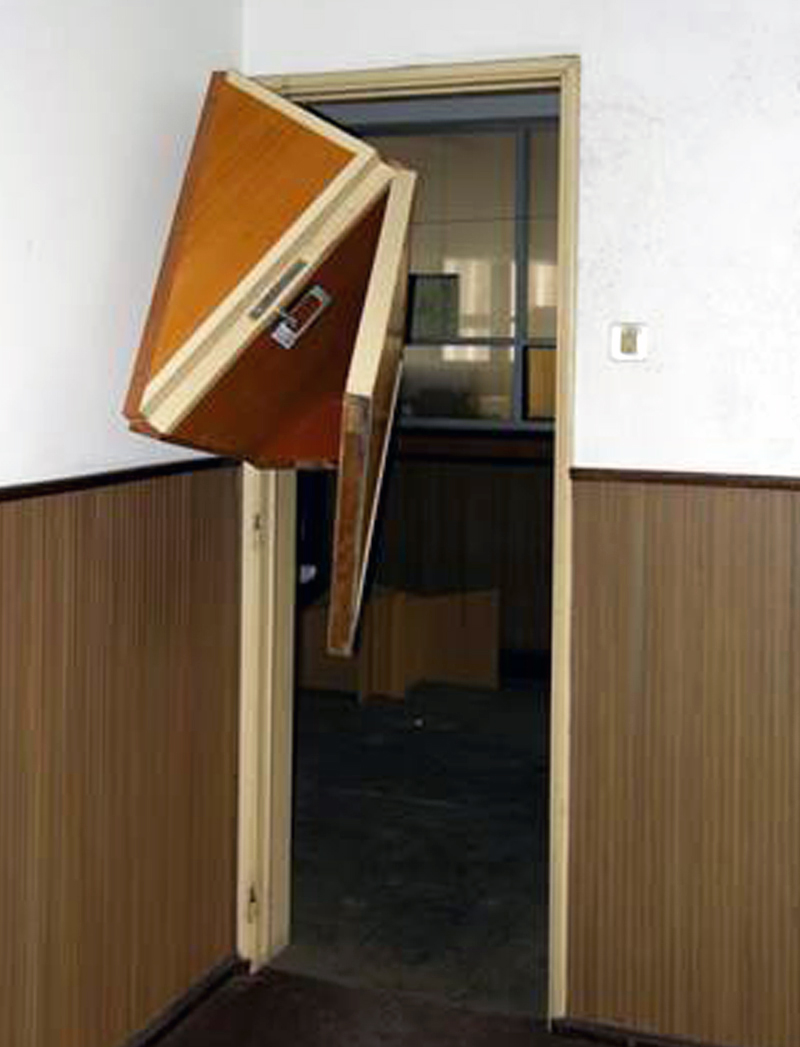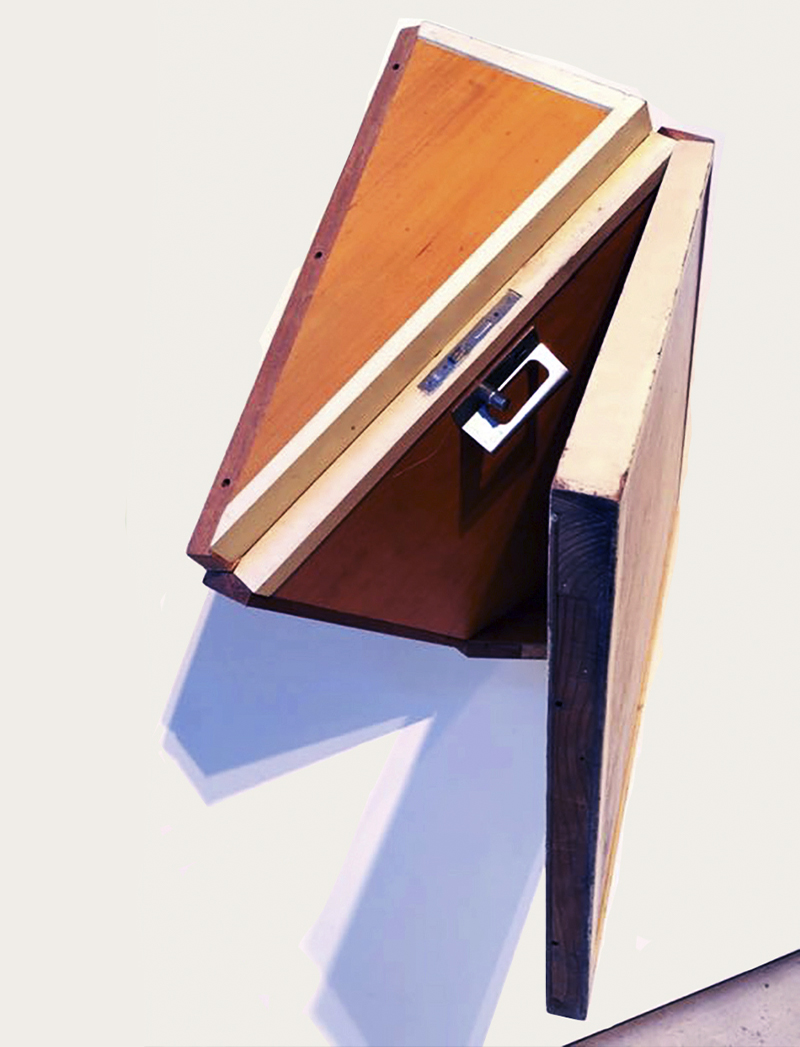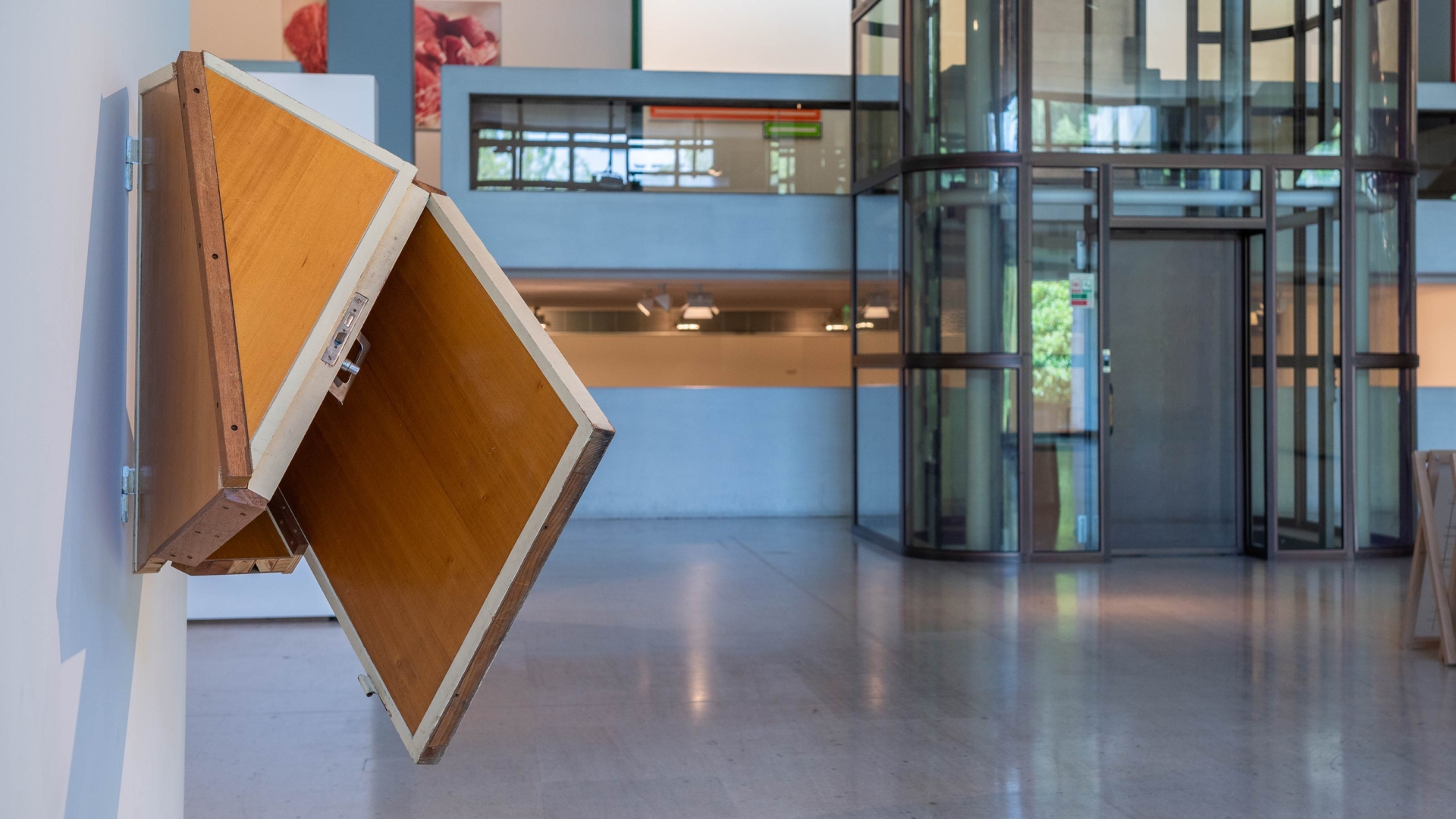Study for an escape
This is a pivotal work in my creative process and probably the first sculpture where I work in and with an extreme situation as a result of the raw material used to produce the piece.
In theory, an escape is an event in which our entire body works in unison to execute a response, which should be quick and effective. On the other hand, study refers to an action occurring on a different schedule, with a different degree of consideration, and the very title of this piece hints at a contradiction or negotiation between opposites.
The raw material in this piece is a door. The door is a device used in architecture to establish spatial hierarchies. The lines and registers of the device as a utilitarian object remain visible; however, its functional efficacy is compromised as soon as the door-object escapes its ontological functional condition and moves into the aesthetic paradigm. The door-object is used in the piece in its entirety, but the fragmentation, movement and tension imposed upon it by the artistic process introduce a dysfunctional dimension. This is the case because not only does the door remain recognisable as such, but the marks left by the exercise of its function are also apparent; the latter are used as bait in the sculpture, heightening the impossibility of fulfilling its original purpose.


The escape referred to in the title of the piece is a journey between the phenomenology of the lived space, including customs, expectations and memories, and a receptacle that not only allows but also demands each of these recognitions, placing viewers in limbo by confronting them with the discrepancy between what the object is de facto and what it once was, allowing for the possibility that, wherever the desire is present, it may once again BE a door.
This escape represents the possibility of internal reconstruction in my creative practice, based on a reorganisation of each of the parts and leading to an escape from abandonment to care. At this point, it is important to inform readers that the door in question comes from my studio on the site of the former Simala Plastic Factory in Leiria. The door was abandoned to its fate, condemned to loneliness like any one of us could be without someone to care for us. The door had been forgotten as a door, but it has been musealised as a work of art, constantly demanding to be used for its former function in order to become the latter. This is an escape from forgetting.

